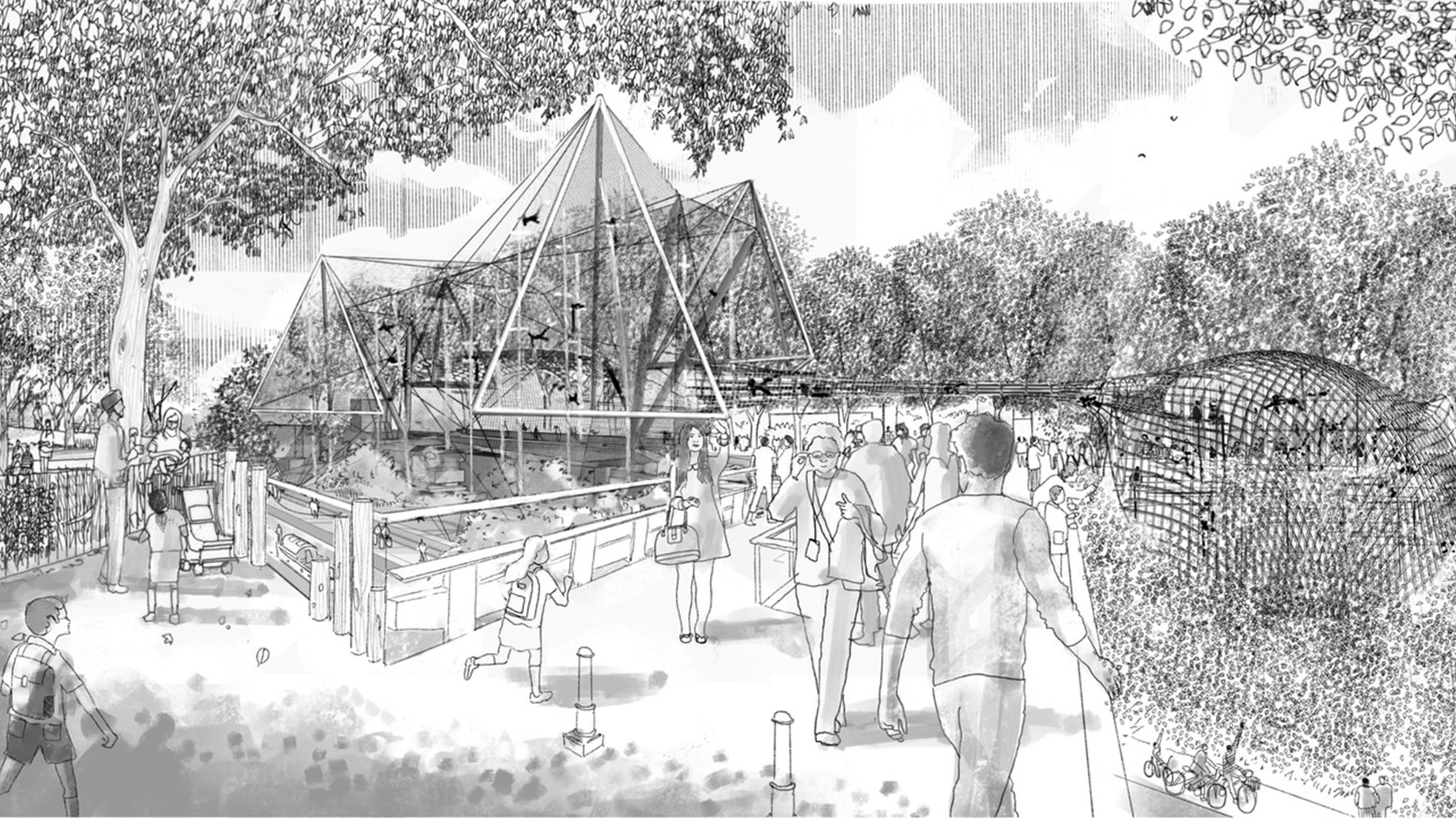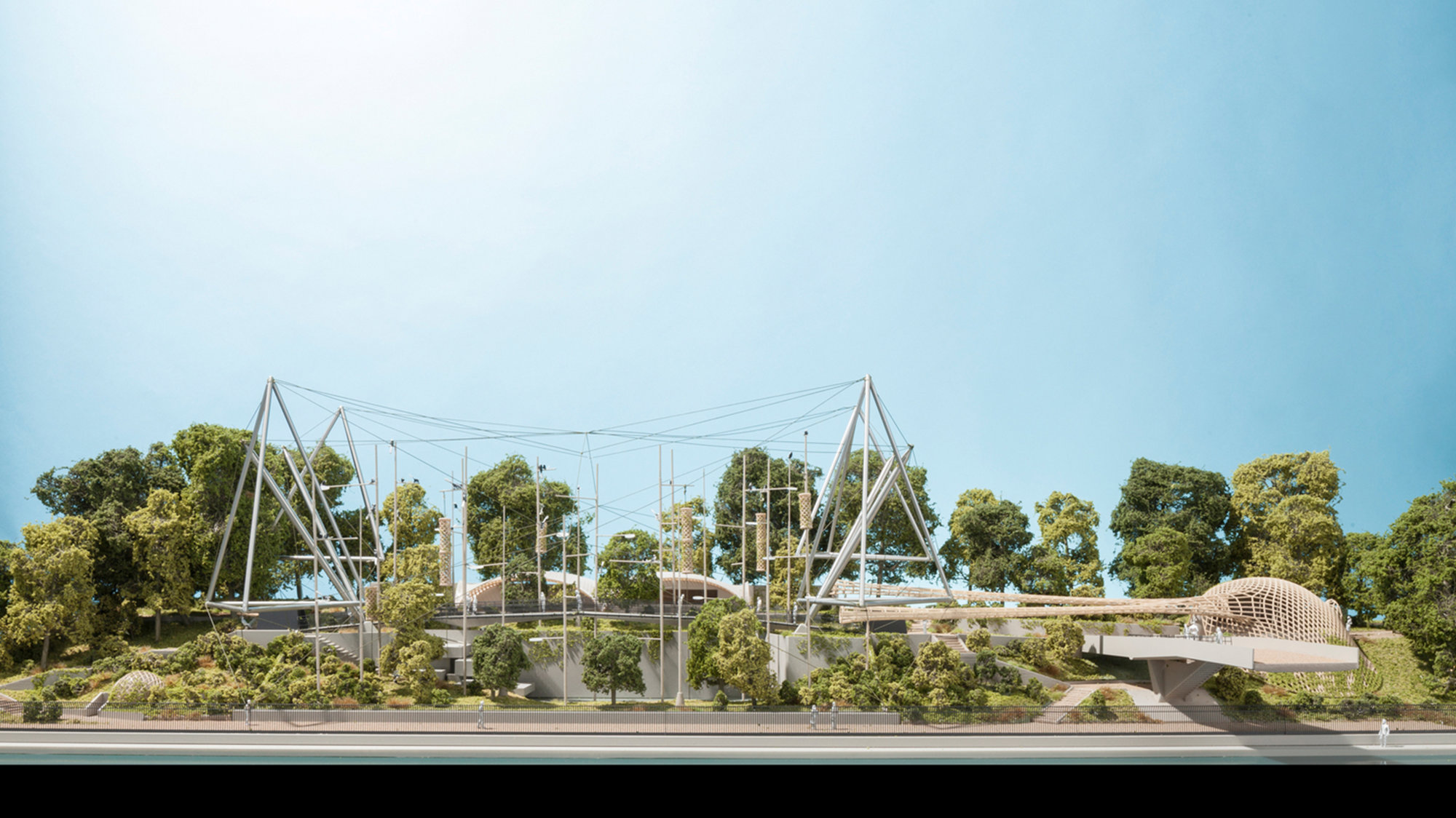Foster + Partners’ plans for the rebirth of the Snowdon Aviary at ZSL London Zoo have received planning approval from Westminster Council.
The Grade II* listed structure, designed by Cedric Price with Frank Newby and Lord Snowdon in 1962, was, and still is a sensational statement. It was the first aviary in Britain that gave visitors a ‘walk-through’ experience, bringing them closer to the birds in their natural habitat. The new design adapts the heritage structure to suit its new inhabitants – a troop of colobus monkeys and parrots – and offers visitors an enhanced experience. It replicates their natural habitat, with a series of vertical elements at different heights that the monkeys can climb onto, encouraging them to leap, jump, and swing to the higher levels of the aviary.
Norman Foster, Founder and Executive Chairman, Foster + Partners said: “The rebirth of the Snowdon Aviary continues our work with historical structures. It is about the fusion of the old and new, but also about repurposing this extraordinary structure. The brand-new walk-though home will allow it to extend its role for decades to come. It will ensure the preservation of an iconic structure and honour its distinguished authors from the past, while preserving a unique built example of Cedric Price’s work.”
The proposal also features an education and community space for Zoo visitors. Hosting up to 30 people, the indoor space will allow school groups to learn more about the colobus monkeys, their habitat and conservation, ZSL’s history and about the architectural legacy of the Zoo.










